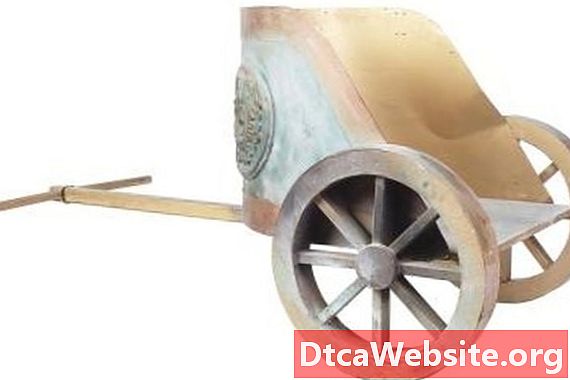
Contenu
- Early History
- Cut-Meter to Speedometer
- First Automobile Speedometer
- Mechanical and Electronic Speedometers

Inventor Nikola Tesla received the first patent for a type of speedometer that was based on a rotating shaft-speed indicator in 1916. But Arthur P. Warner, the original founder of the many incarnations of Warner Electric, claims the rights to the first invention of a speedometer for the automobile. Warner Electric still services the automotive industry by providing industrial clutches and brakes, along with sensors, switches and tensioner systems.
Early History
The first speedometers date back to mans early travels. Since man began adventuring and traveling, hes looked for and found ingenious ways to record his travel data. Wheel markings on chariots helped early Romans estimate travel distances and average speeds by counting the wheel revolutions. Chinese s from the third century tell of a drumbeat that helped the Chinese determine traveling distances. Every time the gear train of the Chinese mechanism, driven by the wheel of the mechanical carriage, hit a specific mark after traveling a set distance, an arm would hit the drum face. Christopher Columbus had sailors use a knotted line with knots spaced evenly at specific intervals to help Columbus determine nautical speed -- thus the term "knots" when talking about boat speed. Sailors would drag the weighted, knotted line in water. Sailors counted the available knots let out in a set period to determine the ships speed.
Cut-Meter to Speedometer
Arthur P. Warner, holder of more than 100 patents -- according to Warner Electrics website -- invented a speed-measuring device for industrial cutting tools, called the cut-meter. He then adapted this technology for the automobile. Several different types of speedometers were available to automobile manufacturers, so A. P. Warner set out on a marketing campaign to promote his speedometer to the public. According to the How Its Made website, Warners "design enjoyed considerable success." After the end of World War I, the Warner Instrument Company placed nine out of every 10 speedometers in automobiles.
First Automobile Speedometer
In 1901, the Oldsmobile Curved Dash Runabout came equipped with a mechanical speedometer. Overland and Cadillac were the next to provide speedometers in their automobiles and soon after, speedometers were offered as factory-installed options in most cars produced. These early speedometers were hard to read and had no illumination for night viewing. Drive cables powered early speedometers by attaching to either the back of the transmission or the front wheels of the automobile.
Mechanical and Electronic Speedometers
It wasnt until about 1920 that mechanical speedometers integrated into the transmission housing itself. This design lasted from 1920 until the British-made 1976 Aston Martin Lagonda arrived on the scene with the first-ever electronic dashboard and digital speedometer. Since these cars were only produced one a week, first deliveries didnt occur until 1979 in Europe and in 1982 in the United States.


